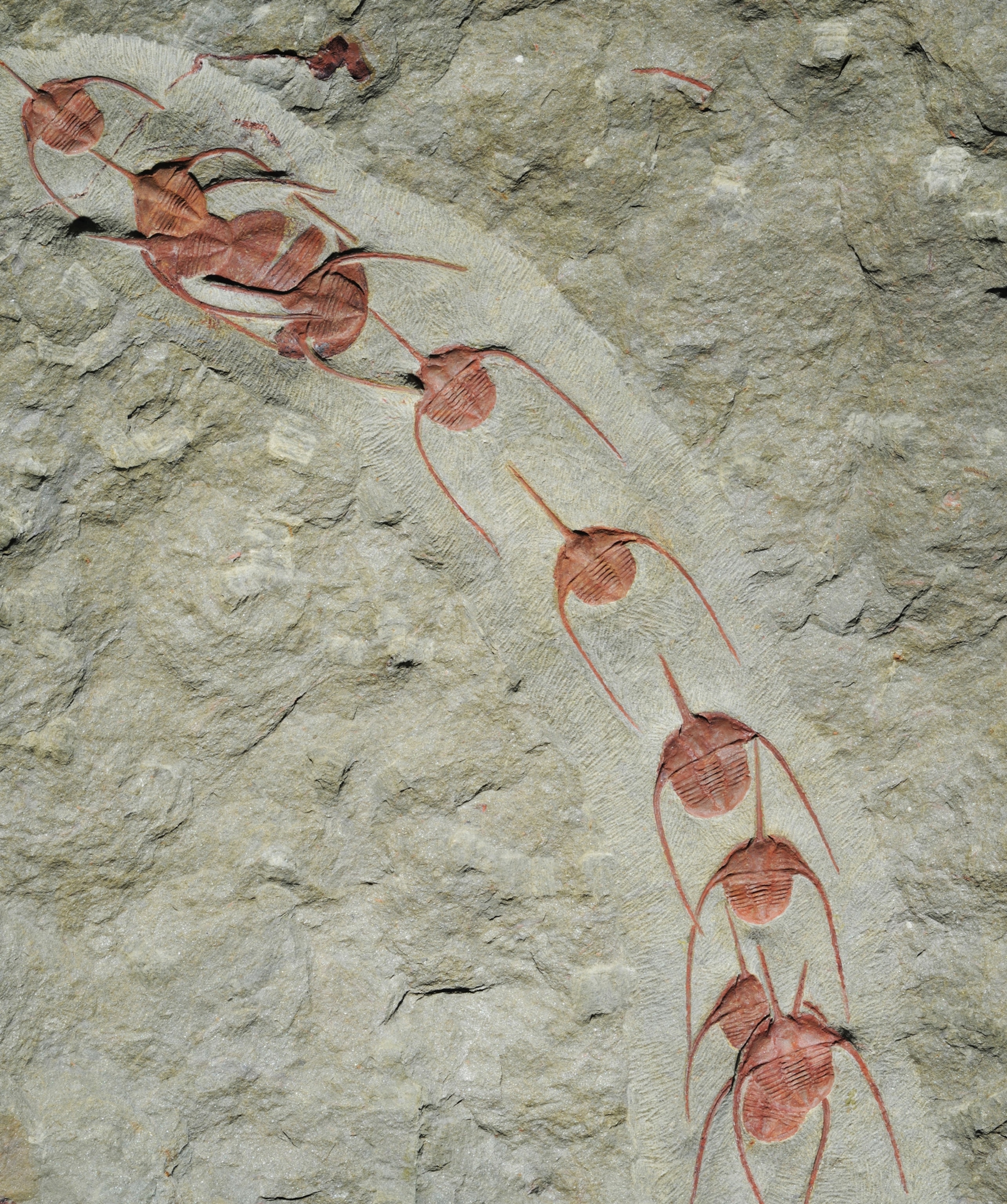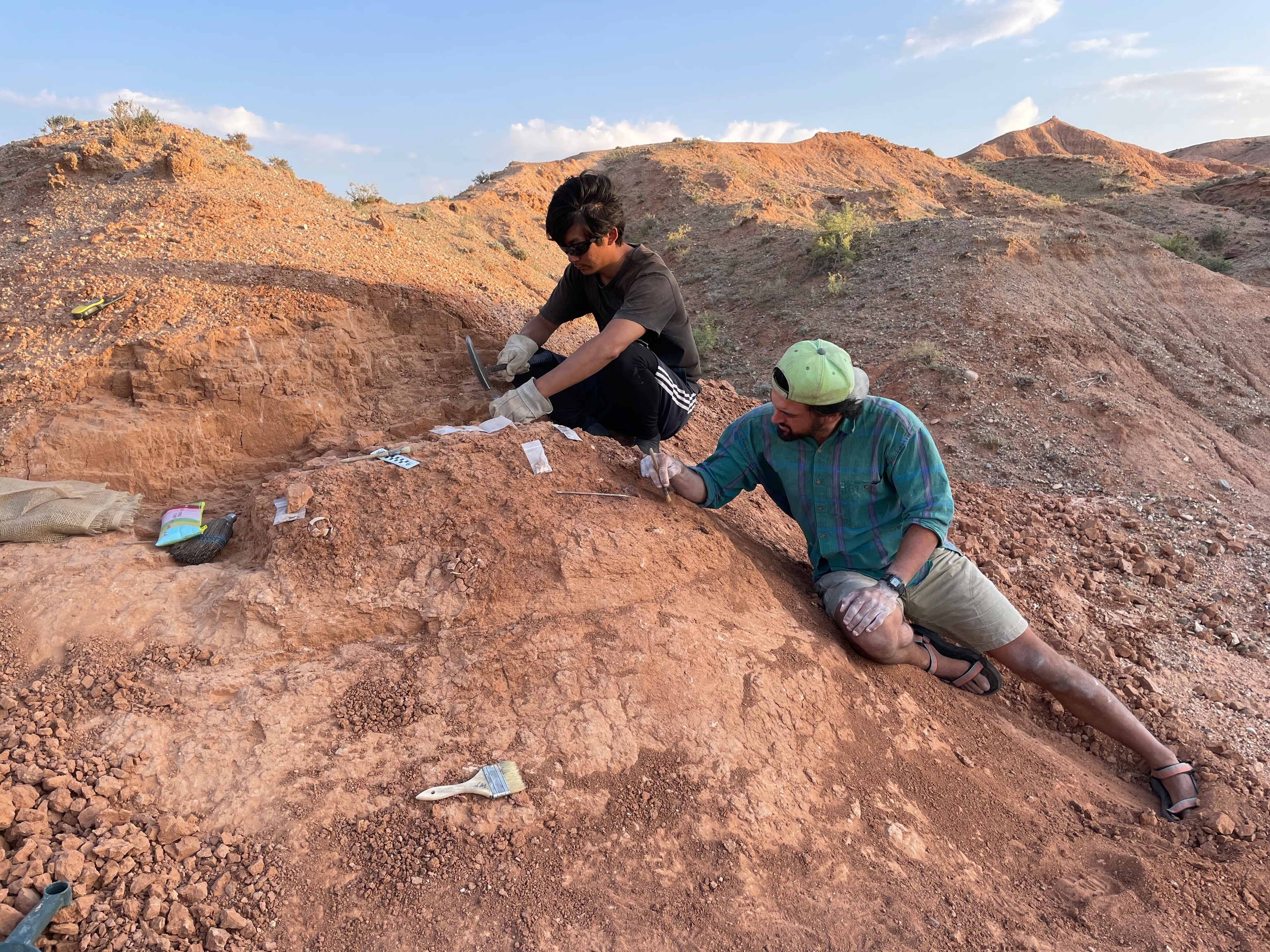
Fossil 'conga lines' reveal origins of animal swarms
About 480 million years ago, an extinct group of marine arthropods related to insects and lobsters gathered in clusters to scuttle across the seafloor.
Nearly half a billion years before the first conga line, marine creatures resembling today’s horseshoe crabs did their own version of the social dance. Newly described fossils capture clusters of these animals sashaying across the ocean floor in lines, perhaps to migrate as a group or gather for mating. The fossils confirm that animals started to coordinate their movements early in Earth’s evolutionary history, researchers announced today in the journal Scientific Reports.
By about 520 million years ago, early life-forms had evolved sophisticated sensory organs, such as antennae and eyes, along with brains that could process all the incoming data. These developments let animals sense each other and act in unison.
The newly described fossils, which date back 480 million years, preserve several Ampyx priscus, a type of marine creature called a trilobite that lived in what’s now France and Morocco. Amazingly, these particular fossils preserve strings of the blind animals, with most of the individual trilobites facing the same way.
“It shows that collective behavior is not a new evolutionary innovation that appeared a couple of million years ago,” lead study author Jean Vannier, a paleontologist at the University of Lyon, says in an email. “Instead, it is much older, dating back to the first biodiversification events of animal life.”
Trilobites are an extinct group of marine arthropods related to today’s insects, spiders, and crustaceans. Today, spiny lobsters in the Bahamas migrate in similar lines, relying in part on subtle variations in Earth’s magnetic field to orient themselves.
“Often when we watch nature documentaries ... documenting all different kinds of behavior in animal groups, people don’t tend to think where the origins of that behavior came from,” says John Paterson, a paleontologist at Australia’s University of New England who reviewed the study. “That’s quite fascinating, that even things like behavior can be preserved in the fossil record.”
Curious queues
Superficially resembling today’s horseshoe crabs and pillbugs, trilobites played a major role in Earth’s earlier history. The group emerged at least 521 million years ago and lasted until 252 million years ago, succumbing only to the worst mass extinction in Earth’s history. That’s a longer tenure than the nonavian dinosaurs.
Over that span, trilobites diversified considerably. Some got more than two feet long; others were festooned in curving spines that were likely used to dissuade jawed fish and other would-be predators. As research has long shown, trilobites regularly gathered in clusters to mate, feed, and possibly defend themselves.
However, in most fossils of trilobite clusters, the trilobites are pointed in random directions—which is why Ampyx’s tidy, single-file lines stand out. In 2008, two researchers speculated that the clusters formed when several Ampyx ducked into a burrow to avoid a predator. But when Vannier and his colleagues looked over their newfound fossils, excavated near Zagora, Morocco, they didn’t see any evidence of burrows.
“It’s a bit of the nail in the coffin for that [burrow] hypothesis,” Paterson says. Instead, they think the Ampyx lines marched along the seafloor until low-oxygen sediments stirred up by storm waves rapidly buried them.
But if that’s the case, how did these eyeless creatures align themselves? The trilobites have three distinctive spines, one jutting from the front and two pointing out from the rear, and in many of the newly described remains, the spines of adjacent Ampyx are touching. Vannier’s team suspects the animals might have used their spines to feel each other out as they marched. It’s also possible that the trilobites sensed each other’s chemical secretions.
Despite the detailed analysis, some aspects of the fossils defy explanation. For instance, on some of the fossils, other types of trilobites occasionally appear to be joining the line. It’s unclear why other trilobite species would opportunistically cut in, or if their odd alignment is just a coincidence of the fossil record.
Vannier says that there could be even older signs of similar clusters, which may help solve the mystery. In 2008, scientists unveiled 525-million-year-old fossils that preserve strings of shrimplike creatures holding onto one another. Those paleontologists interpreted the fossil as a grouping that floated freely in water—but Vannier suspects that like Ampyx, these creatures walked in single file across the ocean floor.





